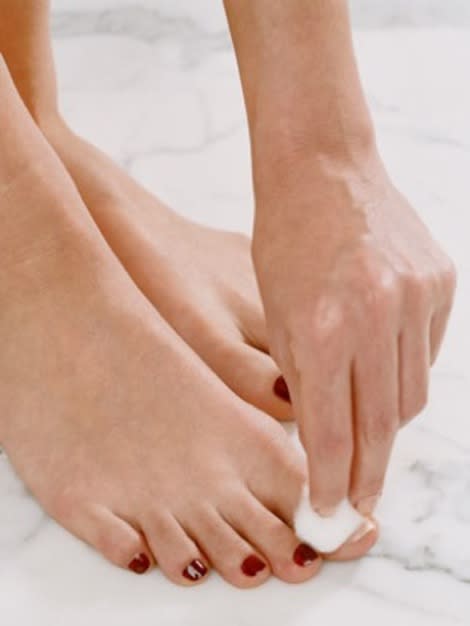Should You Switch to a Soy Nail Polish Remover?
by Stephanie Saltzman

No addiction comes without its downsides: I cannot give in to my compulsive devotion to nail polish without the aid of nail polish remover. Or can I? When a slew of soy-based nail polish removers crossed my desk recently, I wondered if these could truly replace the smelly, ultra-drying--but always thorough--acetone formulas I depend on. I played around with RGB Nail Color Remove Pads, Priti NYC Soy Nail Polish Remover Wipes, and Crabtree & Evelyn Nail Polish Remover Wipes, and then I peppered Joseph Cincotta, a cosmetic chemist and an Allure Product Finder expert, and Gina Carney, the founder of RGB Cosmetics, with questions. Here's what I discovered:
See more:The 12 Best Eye Creams
How do soy-based removers work? "Typical nail polish removers use acetone as the main solvent. It's powerful and effective at dissolving and removing nail polish quickly, yet it has a strong chemical odor, and is very harsh toward skin and nails," says Cincotta. "These non-toxic polish removers principally contain mixtures of naturally derived esters, which are light, typically non-greasy oils. Basically they use the same chemistry as acetone-based removers: they act as solvents to soften and dissolve nail polish."
Are soy-based versions better for you? There are a few different ways soy-based nail polish remover formulas may be less damaging to your skin and nails than acetone versions. "They actually moisturize and condition the nails on every use, versus drying out the nails like typical removers," says Cincotta. He also adds that they're less likely to irritate sensitive skin, and may even help to strengthen nails with repeated use. Many of the soy-based wipes are biodegradable and derived from natural ingredients, so they may also be a greener choice. And according to Cincotta, the soy formulas have "very low vapor pressure," which means you're less likely to breathe in the chemicals.
See more:The Best 6 Spring Nail Polish Colors
How do you use them? For anyone used to traditional nail polish remover, the switch to soy-based versions will likely take some getting used to. "Often you need to let the remover sit on the nail polish for a few minutes to soften the polish enough to remove it, so this is a disadvantage if you're in a rush," says Cincotta. As with acetone removers, the length of the process can vary depending on the type of nail polish you're wearing. "If you're using a sheer or two or three coats of cremes, the nail color comes right off. Metallic or glitter nail colors are going to take more effort, because the metallic particles firmly adhere to nail beds," explains Carney.
What are the downsides? In addition to the aforementioned longer removal time, you'll also have to wash your hands thoroughly before applying a new coat of polish because of the oils the soy-based versions leave behind. "It's always best to clean nail beds with alcohol or water before polishing to remove all natural oils and oils from prep products like removers or lotions," says Carney. She also shares a tip she learned from celebrity nail artist Jenna Hipp (the two collaborated on the popular HIPPxRGB line): "Create a simple prep solution that's 70 percent rubbing alcohol and 30 percent water, and swipe your nails with it before applying a base." And alas, soy-based nail polish removers don't work on gel manicures, so you'll still need to use 100 percent acetone when removing those.
What do you think: Will you try soy based removers?
More fromAllure:
How to Wear Bangs
Top 21 Drugstore Beauty Bargains
Inside Allure's Beauty Blogger Awards!
Best Hairstyles for Spring 2013

